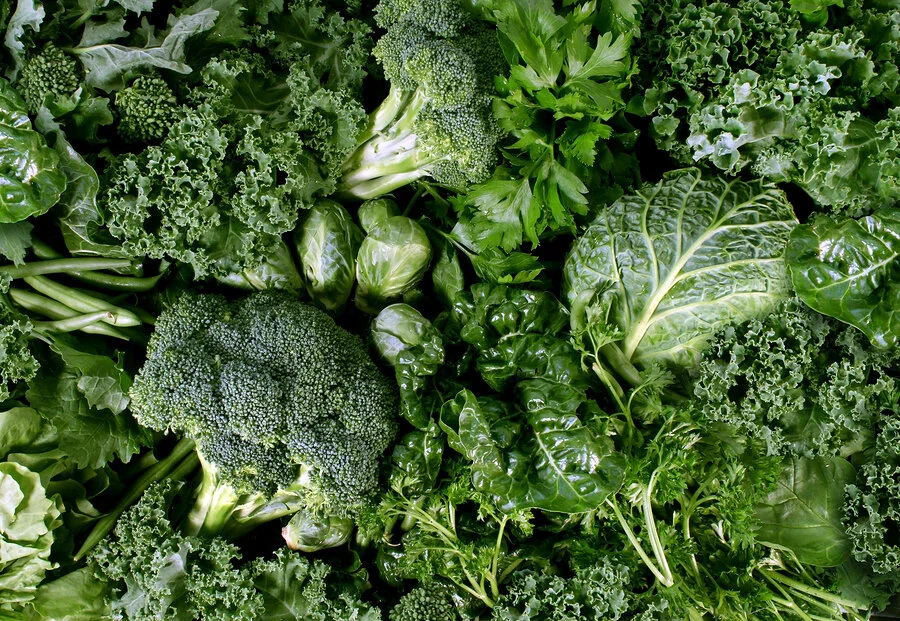Introduction
Leafy greens are among the most nutrient-dense foods on Earth. From spinach and kale to lettuce and Swiss chard, these vibrant vegetables are packed with vitamins, minerals, antioxidants, and fiber that nourish the body and protect it from disease. Incorporating leafy greens into your daily diet is one of the simplest ways to boost overall health and vitality.
This article explores the benefits, types, nutritional profile, and practical ways to enjoy leafy greens, helping you understand why they are considered the cornerstone of a balanced and healthy lifestyle.
What Are Leafy Greens?
Leafy greens refer to the edible leaves of various plants that are rich in nutrients and low in calories. They are widely consumed around the world in salads, soups, smoothies, and cooked dishes.
Common examples include:
-
Spinach
-
Kale
-
Lettuce
-
Collard greens
-
Swiss chard
-
Arugula
-
Mustard greens
-
Beet greens
-
Cabbage
Each type of leafy green has a unique flavor, texture, and nutrient composition, but all share one thing in common — exceptional health benefits.
 Nutritional Profile of Leafy Greens
Nutritional Profile of Leafy Greens
Leafy greens are incredibly nutrient-dense, meaning they provide maximum nutrition with minimal calories. Here’s what makes them a superfood category:
-
Vitamins: Rich in vitamins A, C, E, and K, and many B vitamins like folate.
-
Minerals: Excellent sources of iron, calcium, magnesium, and potassium.
-
Fiber: Promotes digestive health and keeps you full for longer.
-
Antioxidants: Contains powerful compounds like beta-carotene, lutein, and zeaxanthin that protect against cell damage.
-
Phytonutrients: Natural plant chemicals that reduce inflammation and strengthen immunity.
Health Benefits of Leafy Greens
1. Boosts Immunity
Leafy greens are loaded with vitamin C and antioxidants that strengthen your immune system. Regular consumption helps your body fight off infections and maintain good health year-round.
2. Supports Heart Health
Greens like spinach, kale, and arugula are rich in nitrates, which help lower blood pressure and improve circulation. The fiber content also reduces bad cholesterol (LDL), keeping your heart strong.
3. Aids in Weight Management
Leafy greens are low in calories but high in volume and fiber. This combination keeps you full longer, helps control appetite, and promotes healthy weight loss.
4. Improves Digestion
The high fiber content in greens supports gut health by promoting regular bowel movements and feeding beneficial gut bacteria.
5. Strengthens Bones
Leafy greens such as kale and collard greens are great sources of vitamin K and calcium, essential nutrients for maintaining strong bones and preventing osteoporosis.
6. Enhances Eye Health
Greens like spinach and kale contain lutein and zeaxanthin, antioxidants that protect the eyes from harmful blue light and reduce the risk of cataracts and age-related macular degeneration.
7. Detoxifies the Body
The chlorophyll in leafy greens helps cleanse the body by neutralizing toxins and supporting liver function, promoting a natural detox process.
8. Supports Healthy Skin
Vitamin A and antioxidants present in leafy greens help repair skin cells, reduce acne, and give your complexion a natural glow.
 Popular Types of Leafy Greens and Their Unique Benefits
Popular Types of Leafy Greens and Their Unique Benefits
1. Spinach
Packed with iron, magnesium, and folate, spinach supports energy production, blood health, and muscle function.
2. Kale
Often called the “queen of greens,” kale is one of the most nutrient-dense foods on the planet. It’s rich in vitamin K, calcium, and antioxidants.
3. Lettuce
Lettuce varieties like romaine and butterhead are refreshing and hydrating, ideal for salads and wraps.
4. Swiss Chard
Known for its colorful stems, Swiss chard is full of magnesium and potassium, which regulate blood pressure.
5. Collard Greens
These hearty greens are rich in calcium and fiber, supporting digestion and bone strength.
6. Arugula
A peppery-flavored green, arugula adds zest to dishes while delivering vitamins A and K and beneficial phytonutrients.
How to Add Leafy Greens to Your Diet
-
Smoothies: Blend spinach, kale, or arugula with fruits for a nutrient-packed drink.
-
Salads: Mix different greens with olive oil, nuts, and seeds for a healthy meal.
-
Soups & Stews: Add chopped greens toward the end of cooking for a nutrition boost.
-
Stir-Fries: Sauté greens with garlic and olive oil for a simple side dish.
-
Wraps & Sandwiches: Use lettuce or collard leaves as a low-carb alternative to bread.
Tip: Pair leafy greens with healthy fats (like avocado or olive oil) to enhance the absorption of fat-soluble vitamins.
Leafy Greens and Disease Prevention
Numerous studies have linked leafy green consumption to a reduced risk of chronic diseases. Regular intake may help:
-
Lower the risk of heart disease
-
Prevent type 2 diabetes
-
Reduce inflammation in the body
-
Support brain health and memory
-
Protect against certain cancers, thanks to antioxidants and fiber
Organic vs. Conventional Greens
Whenever possible, choose organic leafy greens to avoid pesticide exposure. If organic isn’t available, wash your greens thoroughly with water and a splash of vinegar to remove residues.
Storing Leafy Greens Properly
To keep your greens fresh longer:
-
Store them in the refrigerator in breathable bags or containers.
-
Wrap them in paper towels to absorb excess moisture.
-
Wash just before use to prevent wilting.
Conclusion
Leafy greens are a true gift from nature — nutrient-rich, versatile, and incredibly beneficial for your overall health. Whether you’re looking to boost immunity, support digestion, or enhance your diet with natural vitamins and minerals, adding more greens to your meals is a simple yet powerful step toward better health.
Make them a daily habit — in smoothies, salads, or soups — and your body will thank you with lasting energy, glowing skin, and a stronger immune system.


You must be logged in to post a comment.